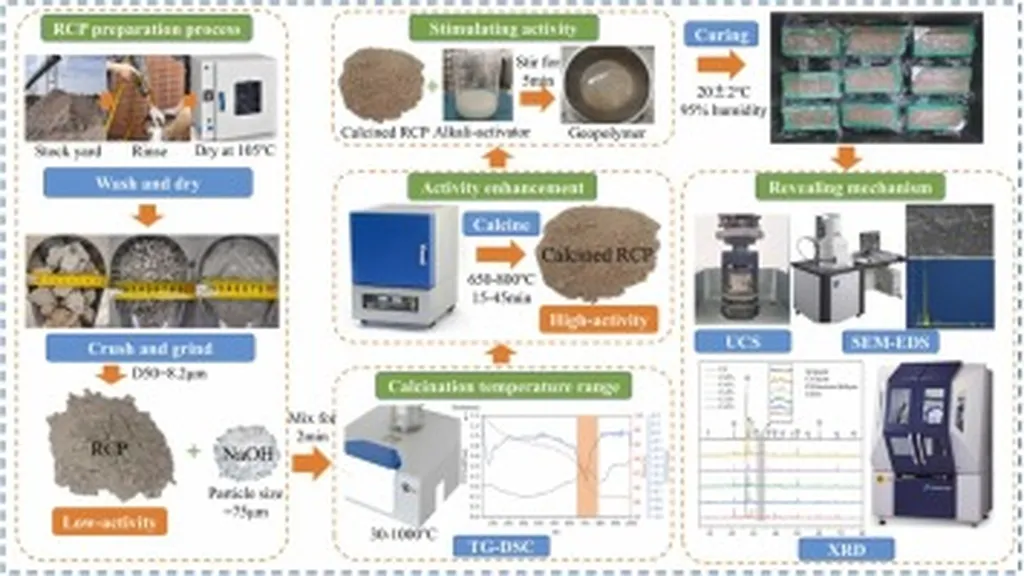In the quest for sustainable construction materials, researchers have made a significant stride by enhancing the performance of recycled geopolymer binders through thermal activation. A study led by A. Naghizadeh from the Department of Engineering Sciences at the University of the Free State in South Africa has demonstrated that calcining recycled binders derived from hardened fly ash-based geopolymer pastes and concrete can substantially improve their reactivity and mechanical properties.
The study, published in the journal ‘Developments in the Built Environment’ (translated from Afrikaans as ‘Ontwikkelings in die Geboude Omgewing’), focused on the thermal activation of recycled binders. The researchers found that calcining these binders at temperatures ranging from 250°C to 550°C significantly boosted their performance. The optimal calcination temperature was determined to be 400°C, which resulted in a remarkable increase in compressive strength—91% for paste-derived binders and 102% for concrete-derived binders.
“This enhancement in mechanical properties opens up new possibilities for the reuse of geopolymer binders in construction, making the process more sustainable and economically viable,” said Naghizadeh. The study also noted that while calcination reduced the pore volume of the resulting mortars, it led to an increase in drying shrinkage, reaching 0.201%.
The implications of this research are profound for the construction and energy sectors. As the demand for sustainable building materials grows, the ability to recycle and enhance the performance of geopolymer binders could revolutionize the industry. “By improving the reactivity and strength of recycled binders, we can reduce the need for virgin materials and lower the environmental impact of construction projects,” Naghizadeh explained.
The findings suggest that thermal activation could be a key technique in the future of sustainable construction. As the industry continues to seek ways to minimize waste and maximize resource efficiency, this research provides a promising avenue for innovation. The enhanced mechanical properties of thermally activated recycled binders could lead to stronger, more durable structures, ultimately benefiting both the environment and the economy.
In summary, Naghizadeh’s research highlights the potential of thermal activation to transform the way we think about recycled materials in construction. As the industry moves towards more sustainable practices, this study offers a compelling example of how innovation can drive progress. The journey towards a greener future in construction is underway, and this research is a significant step in the right direction.

